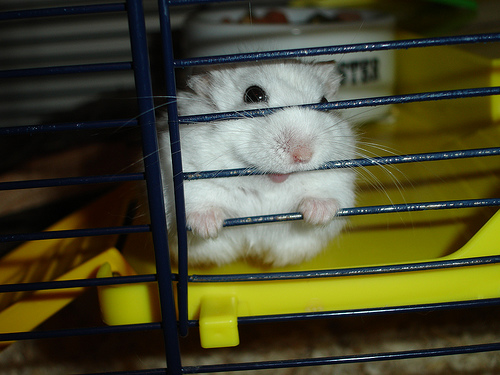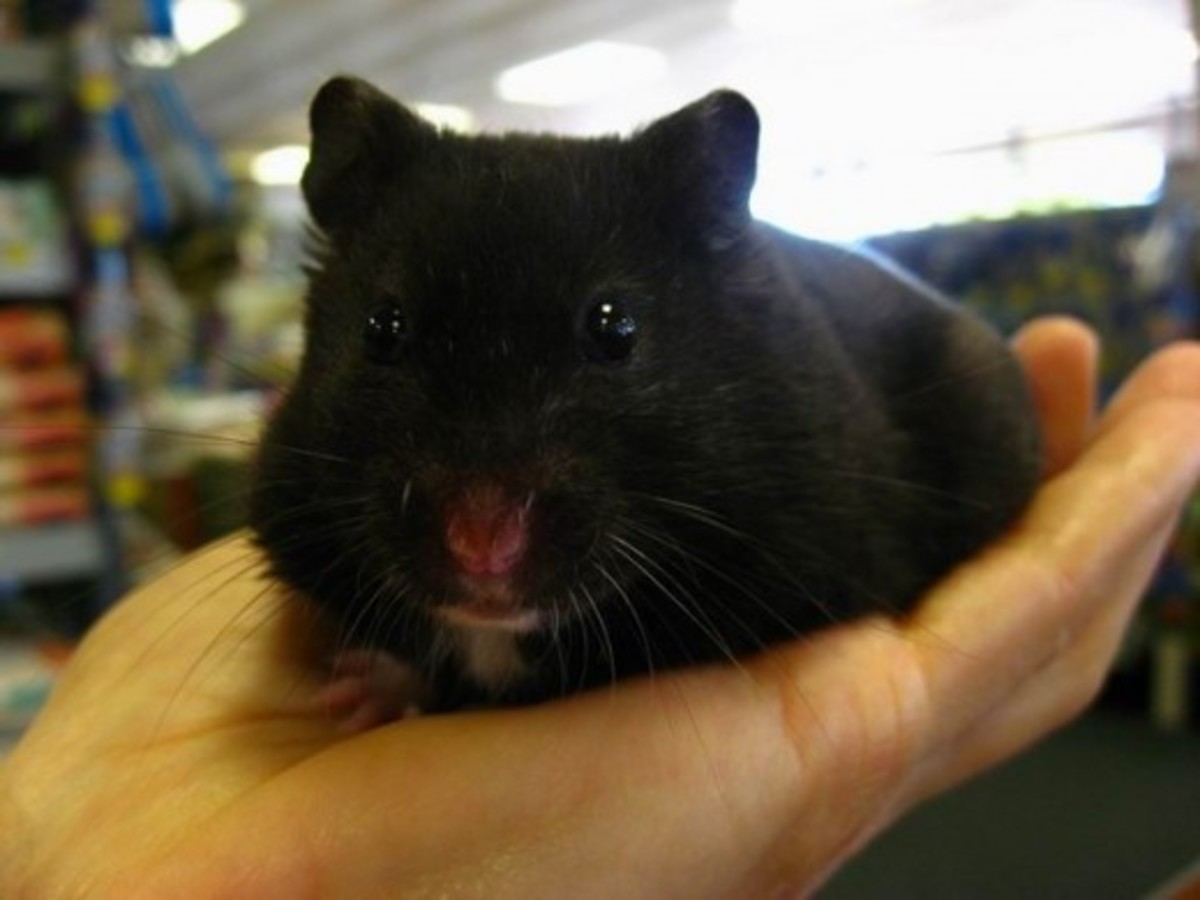Preventing Your Hamster From Getting Lost
If you’ve owned hamsters for a while you know they are great escape artists. They look for openings, can squeeze into small spaces, and know how to move quickly – all the traits of an animal that knows how to break out and run away. Once they make a run for it, they can be lost forever.
So, one of your jobs as a hamster owner is to stop your hammy from escaping so he or she won’t get lost. You might start by considering the type of hamster you get in the first place.
Golden, or Syrian hamsters are about 5 to 7 inches (13 to 18 cm) long while dwarf hamsters are smaller, being only 2 to 4 inches (5 to 10 cm) long. For beginners, owning a larger hamster might be the first step in preventing escape. Larger hamsters are easier to see, easier to hold, and don’t fit into the tiny spaces a dwarf hamster can go. For more information about types of hamsters and their sizes click here.
But once you own a hamster, there are other things you can do to prevent your hamster from getting lost.

Check the hamster cage for spaces
When choosing a hamster cage, you want to get one that fits the size of your hamster. Not too small to cramp them, but not too large to let them wiggle out. For example, especially if you own a dwarf hamster and are considering a metal wire cage, check the space between the cage wires before you buy the cage. Can your dwarf hamsters squeeze through the spaces between the wires?
Remember, if the hamster’s head can fit through, they can also squeeze their body through. If you think your hamster can squeeze through, think about a plastic cage.
But keep in mind that hamsters gnaw on things, including metal wire. Once you own a wire cage you should inspect the metal wires of the cage from time to time. Look for places where the gnawing of your hamster has spread the metal wires apart. If you see some spreading, gently bend the metal wires back into place.
Plastic cages also provide your hamster with opportunities for escape. When you put the plastic cage pieces together, be sure they fit tightly. If there is a loose spot or a place where the plastic has some space between it, your little hamster is likely to start gnawing to make that space bigger. And once the space is big enough (which doesn’t have to be very big), away they go.
Some people use aquariums with a wire mesh top for a hamster cage. Hamsters don’t gnaw through glass, but they sometimes try to climb up to the wire mesh and look for a small space along the edges they can push through. So check your aquarium cages also.
A good time to check your hamster cage for escape hatches is when you clean it out. Do it before you put it back together. And be sure that after your hamster cage is back together, all the pieces fit together snugly.
Finally, don’t try to keep a hamster in a wooden cage. They will eventually gnaw through some part of it and be off.
For much more about hamster cages, click here.
Lock it up
Even if all your hamster cage parts fit together tightly, there’s still one part that requires special attention – the door latch.
All cages have some way to get your hamster in and out. Wire and plastic cages have doors. On aquarium cages the opening is at the top. These are the weak points – and you can be sure your hamster will figure it out.
Because they are used often, door latches can become worn out. In the beginning they snap tightly, but over time, they can become looser. Your hamster is familiar with the opening so may try to gnaw at it or push against it with his or her body. If the latch is loose, your hamster may be able to get it open a small way. And away they go! So when you’re checking your cage, pay special attention to the door latches.
With a wire cage door, you may have to use a metal clip or combination lock to hold the door to the cage. With a plastic cage, you may have to put something heavy, like a rock, against the door.
With aquarium cages, your hamster may try to use his or her weight to push against the top wire mesh to make a small space they can use to escape. It may be wise to put a weight on top of the mesh to prevent this type of escape.
Speaking of locking it up, make sure you keep your other animals locked up or locked out of the room your hamster lives in or is playing in. Otherwise you may permanently lose your hamster.
Keep an eye on your hamster
You probably like to watch your hamster run around in its cage. But it’s important to watch your hamster when it’s out of its cage.
For example, pay attention when your hamster is running around in its exercise ball. It’s possible for the ball to hit something and come apart. Or maybe your hamster has been gnawing at a weak spot in it. If you keep a good lookout, you can grab hammy before he or she runs off.
Of course, the same is true if you are playing with your hamster on the floor or in a bed. Set up some barriers so if you let go of your hamster, he or she can’t make a quick run for a small hole and disappear.
Especially watch out if young children are holding your hamster. Small kids can get scared if a small furry creature suddenly starts crawling up their arm. The kid jumps, your hamster jumps, and your frightened little furry friend may try to run and hide.
Keep these tips in mind and you can keep your hamster from making its great escape.







